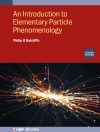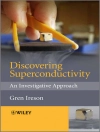Hypersonic Meteoroid Entry Physics provides a fascinating overview of meteoroid atmospheric entry and covers meteoroid observations in outer space; the description of the chemical–physical phenomena during atmospheric entry; recovery of the meteor on the Earth’s surface and meteorite chemical analysis.
The book, based on the lectures given during the Hy MEP course held in Erice in 2017, is addressed to students and researchers with an interest in plasma chemistry, astrophysics and aerospace engineering. It offers a comprehensive overview of the present status of the investigation on meteoroid entry physics while merging the knowledge of astrophysicists and the aerospace engineering communities.
İçerik tablosu
Preface
Acknowledgments
About the Editors
Contributors
Chapter 1 – Considerations on Meteoroid entry physics
Part I – Meteoroid and Meteorite Science
Chapter 2 – The Trajectory, Structure and Origin of the Chelyabinsk Impactor
Chapter 3 – Properties of meteoroids from forward scatter radio observations
Chapter 4 – The flux of meteoroids over time: meteor emission spectroscopy and the delivery of volatiles and chondritic materials to Earth
Chapter 5 – Compositional, mineralogical and structural investigation of meteorites by XRD and LIBS
Part II – Hypersonic Entry Physics
Chapter 6 – Radiation gas dynamics of centimeter meteoric bodies at an altitude of 80 km
Chapter 7 – Super-orbital entry of artificial asteroids (Apollo, Hayabusa) and CFD/ Radiation Thermal analysis of the entry of Chelyabinsk meteorite
Chapter 8 – High Enthalpy Ionized Flows
Chapter 9 – Precursor Ionization during High-Speed Earth’s Entry
Chapter 10 – Response of the Meteoroid/Meteorite to Aerodynamic Forces and Ablation
Chapter 11 – Experimental Investigation of Meteorites: Ground Test Facilities
Chapter 12 – Advanced State-to-State and Multi-Temperature Models for Flow Regimes
Chapter 13 – State-to-State Kinetics in CFD Simulation of Hypersonic Flows Using GPUs
Part III – Elementary Processes in Hypersonic Flows
Chapter 14 – Thermodynamic and Transport properties of reacting air including ablated species
Chapter 15 – Electron-Molecule Processes
Chapter 16 – Heavy Particle Elementary Processes in Hypersonic Flows
Chapter 17 – Nonempirical Analytical Model of Nonequilibrium Dissociation in High-Temperature Air
Chapter 18 – The Role of Vibrational Activation and Bimolecular Reactions in Non Equilibrium Plasma Kinetics
Yazar hakkında
Gianpiero Colonna is a senior researcher at the National Research Council (CNR), in Italy. His research activities are focused on plasma modeling, state-to-state kinetics, thermodynamic and transport properties of plasmas, and modelling plasma plume produced by ns laser pulses. He co-edited the book Plasma modeling: methods and applications in the IOP Series in Plasma Physics.
Mario Capitelli is a full professor of inorganic chemistry at the University of Bari, in Italy. His research is prominent in different fields, including dynamics of elementary processes, plasma physics, chemistry, laser-plasma interaction and aerothermodynamics. Capitelli has contributed to more than 500 publications and has authored and edited a selection of plasma-related books. He received the Laurea Honoris Causa of the Russian Academy of Sciences in Moscow in 2013, and the title of Docteur Honoris Causa of the Université Paris 13, in Paris in 2015.
Annarita Laricchiuta is a researcher at the National Research Council (CNR), in Italy. Her research areas focus on the theoretical calculation of dynamical data for elementary processes in plasmas among other fields of plasma research.












